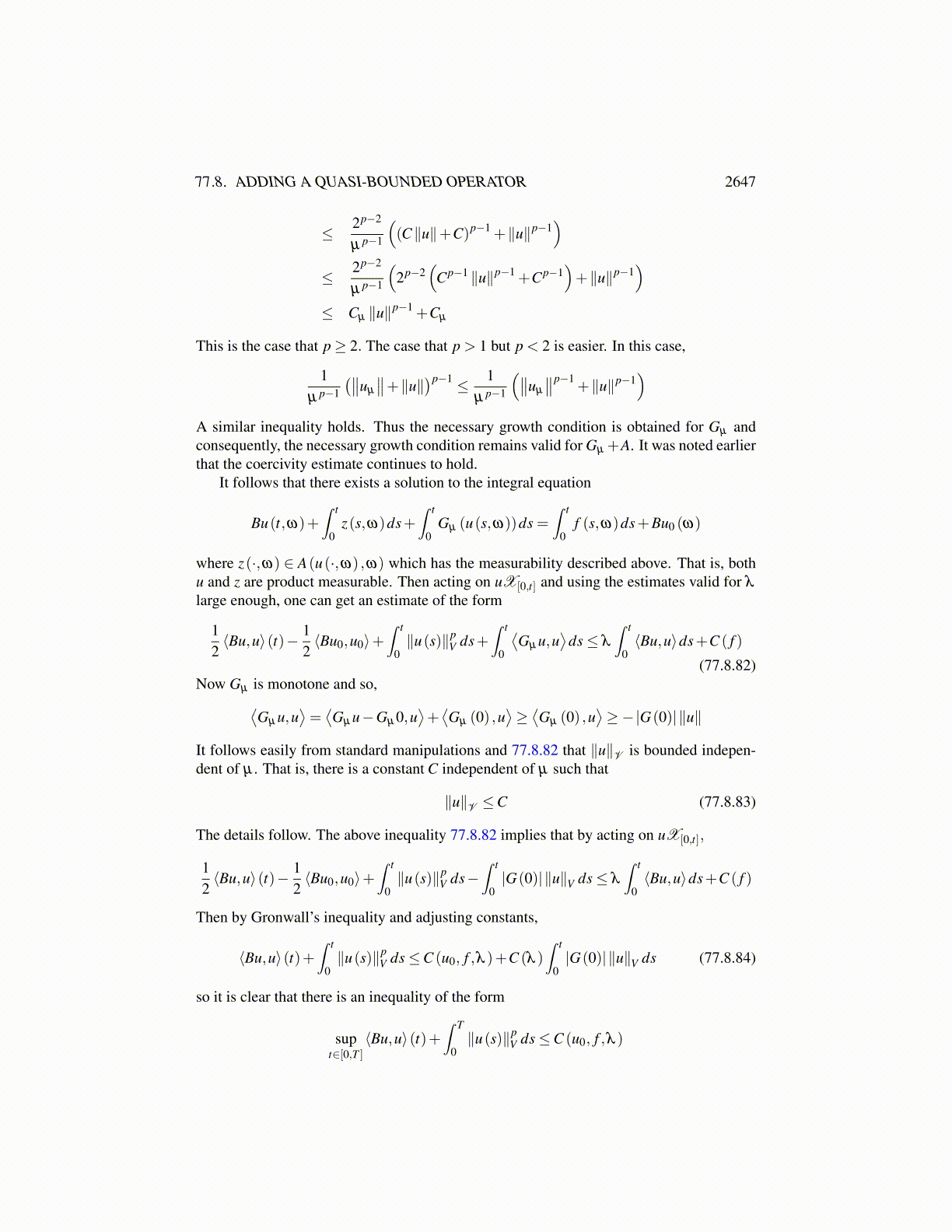
77.8. ADDING A QUASI-BOUNDED OPERATOR 2647
2. Gµ ,Jµ are demicontinuous. That is, strongly convergent sequences are mapped toweakly convergent sequences.
3. For everyx ∈ D(G) ,
∥∥Gµ (x)∥∥≤ |Gx| ≡ inf{∥y∗∥ : y∗ ∈ Gx} .
For every x ∈ conv(D(G)), it follows that limµ→0 Jµ (x) = x. The new symbol meansthe closure of the convex hull. It is the closure of the set of all convex combinationsof points of D(G).
Then A(·,ω)+Gµ will be bounded and have the same limit properties as A(·,ω). Asto measurability, G and hence Gµ do not depend on ω and so the measurability conditionwill hold.
What about the estimates? We need to consider the estimates. Recall what these were:
sup{∥u∗∥V ′I : u∗ ∈ A(u,ω)
}≤ a(ω)+b(ω)∥u∥p−1
VI(77.8.80)
where a(ω) ,b(ω) are nonnegative. Also assume the following coercivity estimate validfor each t ≤ T and for some λ (ω)≥ 0,
inf(∫ t
0⟨u∗,u⟩+λ (ω)⟨Bu,u⟩dt : u∗ ∈ A(u,ω)
)≥ δ (ω)
∫ t
0∥u∥p
V ds−m(ω) (77.8.81)
where m(ω) is some nonnegative constant, δ (ω)> 0.The coercivity is not too bad. This is because Gµ is monotone and 0∈D(G) . Therefore,⟨
Gµ u,u⟩=⟨Gµ u−Gµ (0) ,u
⟩≥ 0
so ⟨Gµ u,u
⟩≥−|G(0)|∥u∥ ≥ δ (ω)
2∥u∥p− m̂(ω)
so the coercivity condition 77.8.81 will end up holding for A+Gµ . However, more needsto be considered for the growth condition.
From the definition of uµ , there exists zµ ∈ Guµ
0 = F(uµ −u
)+µ
p−1zµ
Then from the choice of F, it is also the duality map from V to V ′ corresponding to p > 2.
0 =⟨F(uµ −u
),uµ
⟩V ′,V +µ
p−1 ⟨zµ ,uµ
⟩V ′,V
≥⟨F(uµ −u
),uµ
⟩V ′,V −µ
p−1 |G(0)|∥∥uµ
∥∥V
=∥∥uµ −u
∥∥pV+⟨F(uµ −u
),u⟩−µ |G(0)|
∥∥uµ
∥∥≥∥∥uµ −u
∥∥p−∥∥uµ −u
∥∥p−1 ∥u∥−µ |G(0)|∥∥uµ
∥∥≥ 1
p
∥∥uµ −u∥∥p− 1
p∥u∥p−µ |G(0)|
∥∥uµ
∥∥